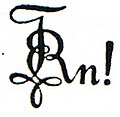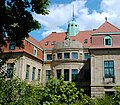This article needs additional citations for verification .(November 2015) |
| Weinheimer Senioren-Convent | |
|---|---|
 Wachenburg, the symbol of WSC | |
| Founded | April 7, 1863 Frankfurt, Germany |
| Type | Umbrella |
| Affiliation | Independent |
| Status | Active |
| Emphasis | Studentenverbindungen |
| Scope | National |
| Motto | Jemer bereit stan! "Always be ready!" |
| Symbol | Wachenburg |
| Publication | CORPS - Das Magazin |
| Members | 58 active |
| Headquarters | Büro des WVAC Friedrichstraße 32 Weinheim 69469 Germany |
| Website | www |
Weinheimer Senioren-Convent (abbreviation: WSC) is the second oldest association of German Studentenverbindungen. It comprises 58 German Student Corps, all of which are based upon the principle of tolerance.



















































































